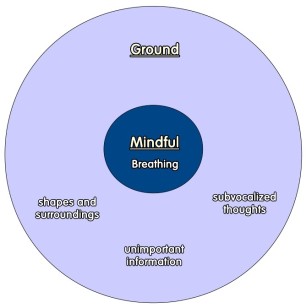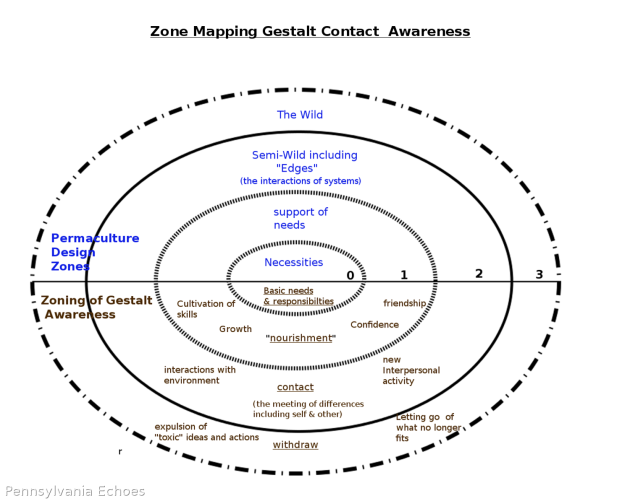Filter_Noise – zone , localise, breathe
November 11, 2017 1 Comment
originally posted October, 2012–
2017-2018 more than ever– especially if one is bombarded with news from television, radio and web feeds– over what is happening “over there”. this group and that group, and globalisation.
Are the going-ons of “over-there” really more important.. during the entire course of a day.. than, going-ons right in the air one breathes… his wellness?
does the ” happening over-there” really apply to oneself? How would he know? his expertise is what and where HE_is over the course of a day.In practice, breathing and zoning enhances a localized approach in thinking and doing. a practice that is more economical to ones personal ecology;
without invading th ecology of “over there.”
it is not avoidant, excessively selfish or xenophobic, to organize ones influence, affect and maintenance from a localized center zoning of importance.
In his work ” Introduction of Permaculture“, Mollison explains his use of “zoning” to allocate areas of gardening and agriculture in a landscape. “Zones”, are prioritize by importance and demand of work. most important and/or work/time intensive crops are located closes to the dwelling area. Un-farmed areas are designated as “the wild”.
Mollison’s (and fellow permaculture father Dave Holmgren) application of zoning is, essential, the act of organizing one’s environment — in the case of permaculture — the garden or farm, around and including living-space. In the image above the living quarters in graphically centered; the most labor intensive and important areas of the garden are kept close .. the least important tasks are pushed to “the wild” or unmanaged land.
I’ve been thinking about the Permaculture method of zoning in gardening and agriculture and I have wondered if one could apply (pattern, if you will) zoning to managing the flood of stimuli and information that seems thrown at us in our day-to-day busy lives.
So many things we sense or think about in any moment of our consciousness, One could easily feel overwhelmed and overloaded.
I am wondering if i can make a connection with Gestalt talk as well, as one visualize zones as figures formed out of a ground (what Mollison calls the wild) by designers.
Could one organize, or garden , his rough consciousness landscape of raw stimuli, senses thoughts, worries, brainstorms and activities? Keep the meaningful tasks, ideas and concerns close and push meaningless data to the background?
From Dischord find Harmony
— Albert Einstein *
Image, senses and thoughts arise as Gestalts, figures from the background of constant noise, discord… It’s up to you and I to decide what is meaningful, important at a given moment, and reject unimportant information, zone back to “the wild”, or background.
…
so how can i improve my abilty to “zone” the flood of information each day?
one way could be to create a simple todo list:
here is one: Pennsylavania Echoes — Todo List.
I keep a todo or task list on my computer, also a calendar — and I have learned not to worry about them until I look at them again.
Another way to learn how to stay relatively “mindful” of important things in the moment and filter out the meaningless to “the wild ” or “background”:
Sit or stand somewhere in …
- relax, be confident, be square in posture.
- breathe in and out from the belly
- become aware of your breathing
- when you catch you mind thinking of some else return to step one
I like this breathing exercise and practice often. I am less distracted by unimportant thing in the present- centered moment.
When being mindful of only breathing, breathing fills the whole of mindfulness, a single zone, while all else is ignored and left to the background of wild data.
Overtime, breathing exercises and meditations are helpful in developing an intuitive ability to zone:
cognation and doing what is important at the moment, and letting go of the unimportant.
Its a great way to reducing stress, feeling more organized, focused and at-peace.







you breathed